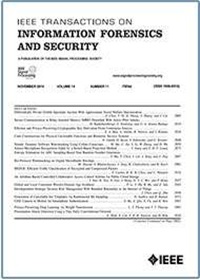A-NIDS: Adaptive Network Intrusion Detection System Based on Clustering and Stacked CTGAN
IF 6.3
1区 计算机科学
Q1 COMPUTER SCIENCE, THEORY & METHODS
IEEE Transactions on Information Forensics and Security
Pub Date : 2025-03-14
DOI:10.1109/TIFS.2025.3551643
引用次数: 0
Abstract
Intrusion detection systems (IDS) are crucial tools for detecting anomalous network traffic in cybersecurity. In recent years, significant progress has been made in applying artificial intelligence to IDS. However, existing research often assumes that training and testing data are static and identically distributed, whereas in reality, data drift is inevitable. Moreover, to enhance model versatility and detection performance, models have become increasingly complex, posing challenges to real-time deployment. To address these challenges, we propose an adaptive network intrusion detection system named A-NIDS, consisting of a main task and two bypass tasks. The main task is to develop a fully connected and shallow network with strong detection performance and real-time capability. The first bypass task is a clustering model that helps the main task detect data drift in an unsupervised manner. The second bypass task is a generation model to generate old data to address catastrophic forgetting in new model iterations and the storage cost issue caused by accumulating old data. We conduct extensive experiments on the CICIDS-2017 and CSE-CICIDS-2018 datasets, demonstrating the superior performance of A-NIDS on new and old data. Furthermore, our detection module achieves a detection latency of 5 microseconds, highlighting its suitability for real-time applications. All the related code is publicly available at:求助全文
约1分钟内获得全文
求助全文
来源期刊

IEEE Transactions on Information Forensics and Security
工程技术-工程:电子与电气
CiteScore
14.40
自引率
7.40%
发文量
234
审稿时长
6.5 months
期刊介绍:
The IEEE Transactions on Information Forensics and Security covers the sciences, technologies, and applications relating to information forensics, information security, biometrics, surveillance and systems applications that incorporate these features
 求助内容:
求助内容: 应助结果提醒方式:
应助结果提醒方式:


